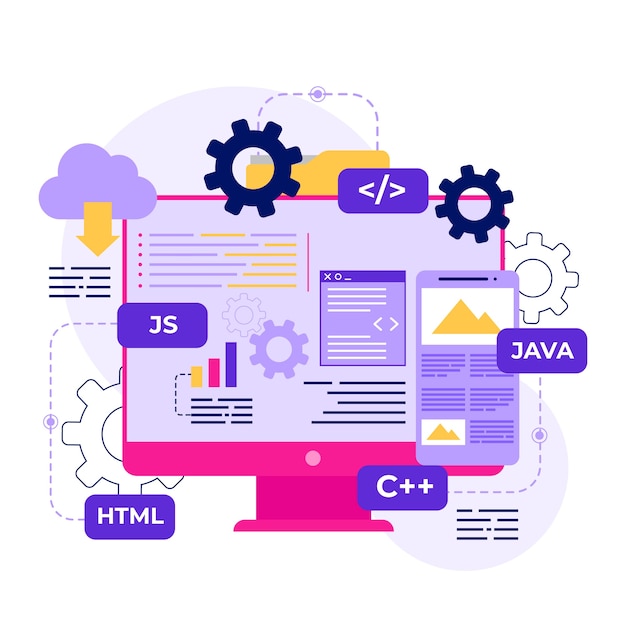Web design, website development and design: key aspects and trends
In today's digital world, websites have become an integral part of business, communication and information space. They are the calling card of companies, stores, organizations and individuals, allowing them to present themselves, their activities and products in the online environment. Web design development and website design play a key role in creating effective and attractive web projects.
Web design is the art of combining aesthetics and functionality, which strives to create a unique and memorable visual experience for visitors. It includes the development of layouts, the choice of colors, fonts, graphic elements and other design aspects that together form the appearance of the site.
However, web design is not just about appearance. An important aspect is also the development and design of sites taking into account user experience (User Experience, UX). UX design aims to provide user-friendly and intuitive site navigation so that users can easily find the information they need and take the necessary actions.
Current trends in web design and website development include responsive design, which allows a website to display correctly on various devices such as computers, tablets and smartphones. Page loading speed is also an important factor, as users expect instant access to information.
In this article, we will look at the basic principles of web design, the importance of UX design, and practical recommendations for creating effective and attractive web projects. We will look at modern tools and technologies that will help you achieve success in web design and website development.
Join us and learn how to create unique and functional web designs that will attract and hold users' attention.
Basic aspects of web design and website development
Web design: aesthetics and functionality
Web design is the process of creating the visual appearance of a website, which includes choosing colors, fonts, graphic elements and content layout. The main goal of web design is to create an attractive and unique design that will reflect and highlight the identity of a brand or organization.
One of the key aspects of web design is aesthetics. The color scheme, use of images and graphics, as well as the overall style of the site should be harmonious and consistent with the goals and objectives of the project. Web designers also pay attention to the layout of content so that it is easy to understand and user-friendly.
However, web design is not limited to just aesthetic aspects. An important factor is the functionality of the site. The design should be intuitive and user-friendly so that they can easily find the information they need and take the necessary actions. Good web design must be compatible with different devices and browsers to provide an optimal user experience.
Website development with user experience (UX) in mind
User Experience (UX) is an area of web design that focuses on creating a user-friendly and enjoyable user experience. The main goal of UX design is to satisfy the needs and expectations of users by providing them with a simple and intuitive interface.
One of the key aspects of UX design is site navigation. Users should be able to easily find the information they need and navigate through different sections of the site. Good navigation includes clear and understandable links, menus, and search that help users navigate.
An important aspect of UX design is also page loading speed. Users expect instant access to information, so optimizing the loading process is an integral part of website development. This includes optimizing images, using caching and file compression, and choosing the best hosting.
Practical recommendations for successful web design and website development
Adaptive design
Modern websites must be adaptive, that is, display correctly on different devices and screens. Mobile devices have become the main means of accessing the Internet, so it is important that the site is optimized for mobile platforms. Adaptive design allows you to automatically change the size and layout of website elements depending on the screen size.
Use of modern tools and technologies
Web design and website development are constantly evolving, with new tools and technologies emerging that help you create more effective and attractive web projects. It is important to follow the latest trends and use modern tools such as CSS frameworks, image editors and tools for optimizing page load.
Testing and optimization
Testing is an important part of website development. Before launching your site, it is important to test it on different devices and browsers to ensure it works correctly. It is also important to optimize your website to improve its performance and loading speed.
conclusions
Web design development and website design play an important role in creating effective and attractive web projects. Web design should combine aesthetics and functionality, and UX design should provide convenience and intuitive navigation for users. Responsive design, use of modern tools and technologies, as well as testing and optimization are all key aspects of successful web design and website development. By following practical recommendations, you can create unique and functional web projects that will attract and hold the attention of users.

